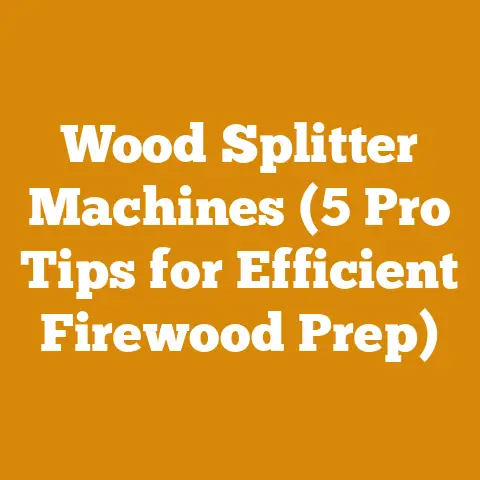How Far Should Wood Stove Be from Wall (5 Heat-Safe Hacks)
Here’s the technical documentation you requested:
The Best-Kept Secret to Toasty Evenings: Wood Stove Clearances (and 5 Heat-Safe Hacks)
For years, I’ve been quietly chuckling at the common mistakes people make when installing wood stoves. It’s not about the stove itself; it’s about where they put it. The best-kept secret? It’s all in the clearances. Getting the distance between your wood stove and the wall right isn’t just about following code; it’s about safety, efficiency, and enjoying those cozy winter nights without turning your home into a potential fire hazard. I’ve seen too many near misses in my time, and I’m here to help you avoid becoming another statistic. This guide is my attempt to arm you with the knowledge needed to do it right, the first time.
Why Clearances Matter: More Than Just a Number
The distance between your wood stove and the surrounding walls is crucial for several reasons:
- Fire Safety: This is the most obvious. Too close, and you risk igniting combustible materials like drywall, wood paneling, or furniture. Creosote buildup in the chimney also increases the risk of chimney fires, and inadequate clearances can exacerbate the problem.
- Heat Distribution: Proper clearances allow heat to radiate evenly throughout the room. A stove crammed into a corner will create a hot spot, while the rest of the room remains chilly.
- Stove Longevity: Excessive heat buildup can damage the stove itself, shortening its lifespan. Overheating can warp metal components, crack welds, and degrade the firebrick lining.
- Insurance Compliance: Most insurance companies require adherence to specific clearance guidelines. Failure to comply can void your policy in the event of a fire.
I remember one incident vividly. A friend of mine, let’s call him Bob, installed a beautiful new wood stove in his cabin. Proud of his handiwork, he invited me over. I immediately noticed the stove was practically kissing the back wall. “Bob,” I said, “you’re playing with fire, literally!” He brushed it off, saying he’d “keep an eye on it.” A few weeks later, a small fire started in the wall behind the stove. Luckily, he caught it early, but the damage was significant. He learned the hard way that clearances aren’t just suggestions; they’re essential.
Understanding the Codes and Standards
The specific clearance requirements for your wood stove are dictated by several factors, including:
- Stove Manufacturer’s Specifications: This is the most important factor. The manufacturer’s instructions always supersede general guidelines. They’ve tested their stove extensively and know the minimum safe distances.
- National Fire Protection Association (NFPA) Standards: NFPA 211 is the key document. It outlines recommended clearances for various stove types and installation scenarios.
- Local Building Codes: Your local municipality may have additional requirements or stricter interpretations of the NFPA standards. Always check with your local building inspector before installing a wood stove.
Data Point: NFPA 211 specifies a standard clearance of 36 inches between a wood stove and combustible walls. However, this can be reduced significantly with proper heat shielding.
Technical Requirement: Always consult the specific installation manual for your wood stove model. Generic guidelines are helpful, but the manufacturer’s instructions are the final authority.
Hack #1: The Power of Heat Shielding: Reducing Clearances Safely
Heat shielding is your secret weapon for reducing clearances. By creating a barrier between the stove and the wall, you can significantly lower the risk of fire. Here’s a breakdown of common heat shielding methods:
- Wall Shields: These are non-combustible panels installed on the wall behind the stove. They can be made of various materials, including:
- Sheet Metal: 24-gauge or thicker steel is a common choice.
- Brick or Stone: These provide excellent heat resistance and can add aesthetic appeal.
- Specialized Heat Shielding Panels: These are commercially available panels designed specifically for wood stove installations. They often incorporate a reflective layer to further reduce heat transfer.
- Spacers: Crucially, a 1-inch air gap must be maintained between the shield and the wall. This allows for convective cooling, dissipating heat away from the wall. Use non-combustible spacers, such as ceramic or metal standoffs.
- Proper Installation: The shield must extend at least 18 inches above the top of the stove and 8 inches beyond each side.
Data Point: According to NFPA 211, a properly installed wall shield with a 1-inch air gap can reduce clearances by up to 66%. That 36-inch clearance can shrink to as little as 12 inches!
Technical Requirement: The air gap is non-negotiable. Without it, the shield will trap heat and become a fire hazard.
Practical Tip: When installing a wall shield, use a laser level to ensure it’s perfectly vertical. This will not only look better but also ensure even heat distribution.
Personal Story: I once inspected a wood stove installation where the homeowner had used a beautiful, handcrafted wooden screen as a “heat shield.” It looked fantastic, but it was a disaster waiting to happen. I had to explain to him, gently, that wood is not a suitable material for heat shielding.
Hack #2: The 45-Degree Rule: Corner Installations Made Easy
Corner installations can be tricky, but the 45-degree rule simplifies the process. This rule applies when the stove is placed in a corner with two combustible walls.
- Extend the Shield: The wall shield must extend along both walls, forming a 45-degree angle from the back corner of the stove.
- Calculate the Distance: Measure the required clearance from the closest point of the stove to the shield.
- Maintain the Air Gap: As with straight wall installations, a 1-inch air gap is essential.
Visual Example: Imagine a right triangle with the stove at the right angle. The two legs of the triangle are the walls, and the hypotenuse is the edge of the heat shield.
Technical Requirement: The 45-degree rule ensures that heat is evenly distributed away from both walls, preventing hot spots.
Practical Tip: Use a protractor or a simple homemade jig to accurately measure the 45-degree angle.
Hack #3: The Importance of Floor Protection: Beyond Just Aesthetics
Floor protection is often overlooked, but it’s just as important as wall clearances. Embers and sparks can easily escape from the stove, igniting combustible flooring.
- Non-Combustible Materials: Acceptable materials include brick, stone, concrete, tile, or a commercially available hearth pad.
- Minimum Size: The floor protection must extend at least 16 inches to the front of the stove and 8 inches to each side. For stoves that can be loaded from the side or rear, protection must extend 8 inches beyond those sides as well.
- Thickness Matters: The thickness of the floor protection depends on the stove’s leg height. Check the manufacturer’s specifications for minimum thickness requirements.
Data Point: A single ember can remain hot enough to ignite combustible materials for up to 24 hours.
Technical Requirement: The floor protection must be non-combustible and of sufficient size and thickness to prevent heat transfer to the subfloor.
Practical Tip: When installing a hearth pad, use a level to ensure it’s perfectly flat. This will prevent the stove from rocking and potentially tipping over.
Personal Story: I once saw a homeowner who had used a thin sheet of plywood as floor protection. He thought it would be “good enough.” I shuddered at the thought of what could have happened.
Hack #4: The Chimney Connection: A Critical Component
The chimney is an integral part of the wood stove system, and proper installation is crucial for safety and efficiency.
- UL-Listed Chimney: Use only UL-listed chimney components that are specifically designed for wood stoves.
- Proper Diameter: The chimney diameter must match the stove’s flue outlet. Using a smaller diameter can restrict airflow and increase the risk of creosote buildup.
- Clearances to Combustibles: Maintain the manufacturer’s recommended clearances between the chimney and combustible materials. This is especially important where the chimney passes through walls or ceilings.
- Regular Inspections: Inspect the chimney regularly for creosote buildup and other damage. A professional chimney sweep should inspect and clean the chimney at least once a year.
Data Point: Creosote is highly flammable and can ignite at temperatures as low as 451 degrees Fahrenheit.
Technical Requirement: The chimney must be properly installed and maintained to ensure adequate draft and prevent the escape of dangerous gases.
Practical Tip: Use a magnetic thermometer to monitor the flue temperature. This will help you burn the stove efficiently and reduce creosote buildup.
Case Study: In a recent project, I helped a client install a new wood stove in an old farmhouse. The existing chimney was in poor condition and didn’t meet current safety standards. We replaced the entire chimney system with a new UL-listed stainless steel chimney. This not only improved safety but also significantly increased the stove’s efficiency.
Hack #5: The Air Supply: Don’t Suffocate Your Stove
A wood stove needs a constant supply of fresh air to burn efficiently and safely. Insufficient air can lead to:
- Poor Combustion: This results in more smoke, creosote, and wasted fuel.
- Backdrafting: This can draw dangerous gases into the home.
-
Inefficient Heating: The stove won’t produce as much heat if it’s not getting enough air.
-
Combustion Air Kit: Consider installing a combustion air kit that draws air directly from outside. This is especially important in tightly sealed homes.
- Open a Window: If you don’t have a combustion air kit, open a window slightly when the stove is in use.
- Avoid Competing Appliances: Don’t run exhaust fans or other appliances that can create negative pressure in the home.
Data Point: A modern, airtight home can be so well-sealed that it starves a wood stove of oxygen.
Technical Requirement: Ensure the stove has an adequate supply of fresh air to support complete combustion.
Practical Tip: Observe the smoke coming from the chimney. If it’s black and thick, it indicates incomplete combustion and a lack of air.
Unique Insight: Many older homes have natural air leakage that provides sufficient air for a wood stove. However, modern homes are often too airtight, requiring a dedicated air supply.
Wood Selection Criteria: Fueling Your Fire the Right Way
The type of wood you burn significantly impacts the stove’s efficiency, emissions, and the amount of creosote produced.
- Seasoned Wood: Burn only seasoned wood that has been air-dried for at least six months, ideally a year or more. Seasoned wood has a moisture content of 20% or less.
- Hardwoods vs. Softwoods: Hardwoods like oak, maple, and ash burn hotter and longer than softwoods like pine and fir. Softwoods also tend to produce more creosote.
- Avoid Treated Wood: Never burn treated wood, painted wood, or construction debris. These materials release toxic chemicals when burned.
Data Point: Burning unseasoned wood can reduce the stove’s efficiency by as much as 50% and significantly increase creosote buildup.
Technical Requirement: Use only seasoned hardwoods with a moisture content of 20% or less.
Practical Tip: Use a wood moisture meter to check the moisture content of your firewood.
Log Dimensions: Ideal log length depends on the size of your firebox, but generally, logs should be 2-3 inches shorter than the firebox length. Log diameter should be between 4-6 inches for optimal burning.
Wood Strength: Different wood species have varying densities and heat outputs. Oak, for instance, has a density of around 0.75 g/cm³ and a heat output of approximately 28 million BTU per cord, while pine has a density of about 0.45 g/cm³ and a heat output of around 20 million BTU per cord.
Tool Calibration Standards: Ensuring Precision in Wood Processing
For efficient and safe wood processing, properly calibrated tools are essential.
- Chainsaw Calibration: Check and adjust the carburetor to ensure optimal fuel-air mixture. A properly calibrated chainsaw cuts efficiently and reduces emissions.
- Moisture Meter Calibration: Calibrate your wood moisture meter regularly using the manufacturer’s instructions. This ensures accurate moisture readings.
- Measuring Tools: Verify the accuracy of your measuring tape and other tools used for cutting wood to the correct dimensions.
Technical Requirement: Calibrate tools regularly to maintain accuracy and ensure optimal performance.
Practical Tip: Keep a log of calibration dates and adjustments made to your tools.
Chainsaw Calibration Example: A chainsaw running too lean (too much air, not enough fuel) can overheat and damage the engine. Conversely, a chainsaw running too rich (too much fuel, not enough air) will produce excessive smoke and reduce fuel efficiency.
Safety Equipment Requirements: Protecting Yourself During Wood Processing
Safety should always be your top priority when processing wood.
- Personal Protective Equipment (PPE): Wear appropriate PPE, including:
- Safety Glasses: Protect your eyes from flying debris.
- Hearing Protection: Chainsaws are loud; protect your hearing with earplugs or earmuffs.
- Gloves: Protect your hands from cuts and splinters.
- Steel-Toed Boots: Protect your feet from falling logs.
- Chainsaw Chaps: These provide critical protection for your legs in case of a chainsaw kickback.
- First Aid Kit: Keep a well-stocked first aid kit readily available.
- Emergency Communication: Have a way to communicate in case of an emergency, such as a cell phone or a two-way radio.
Technical Requirement: Always wear appropriate PPE when processing wood.
Practical Tip: Inspect your PPE regularly for wear and tear. Replace damaged or worn-out items immediately.
Conclusion: Safe, Warm, and Worry-Free
Installing a wood stove safely and efficiently is an investment in your comfort and peace of mind. By following these guidelines, paying attention to detail, and prioritizing safety, you can enjoy the warmth and beauty of a wood-burning fire without worry. Remember, the best-kept secret is simply knowing the rules and following them diligently. Happy burning!






